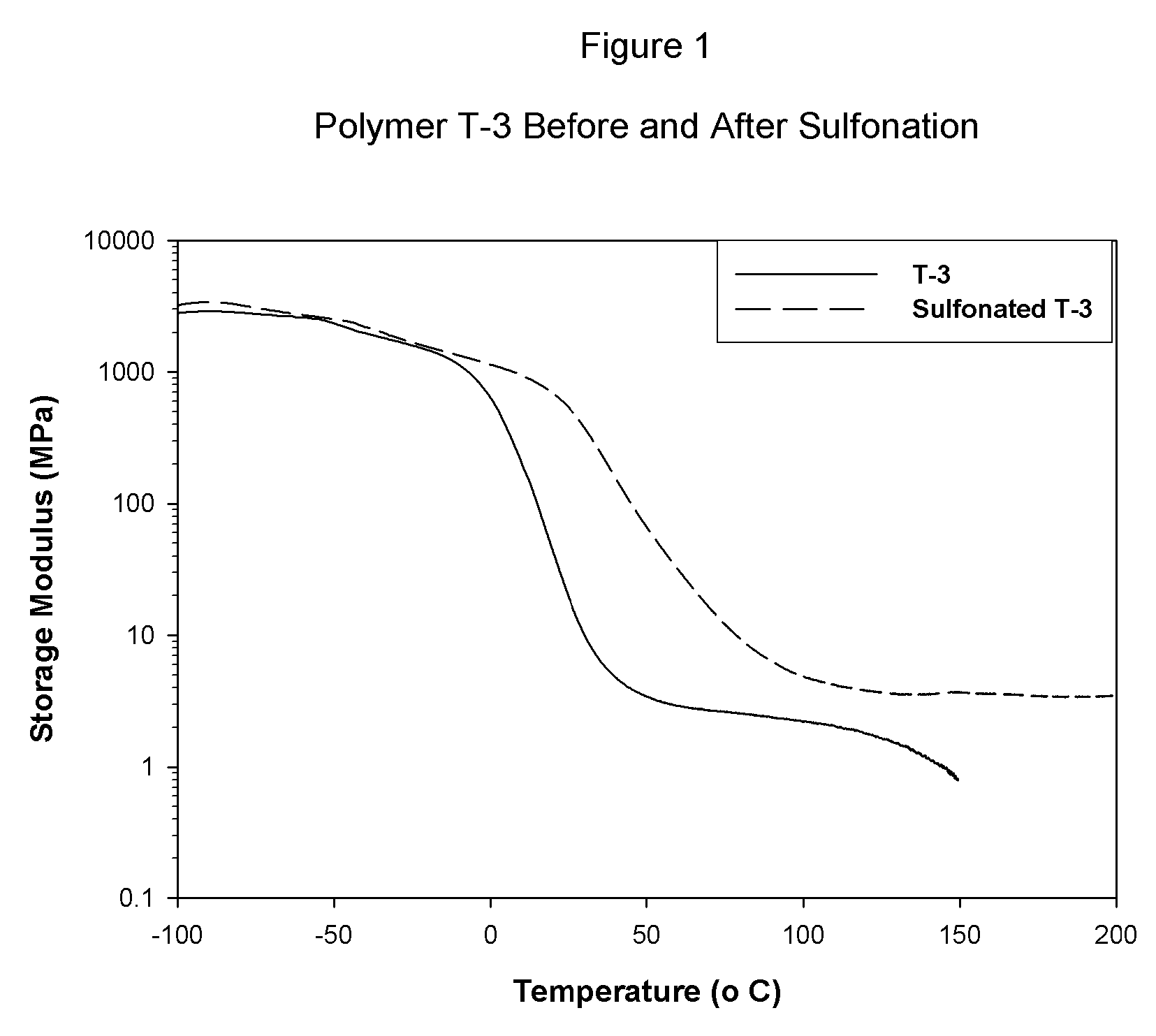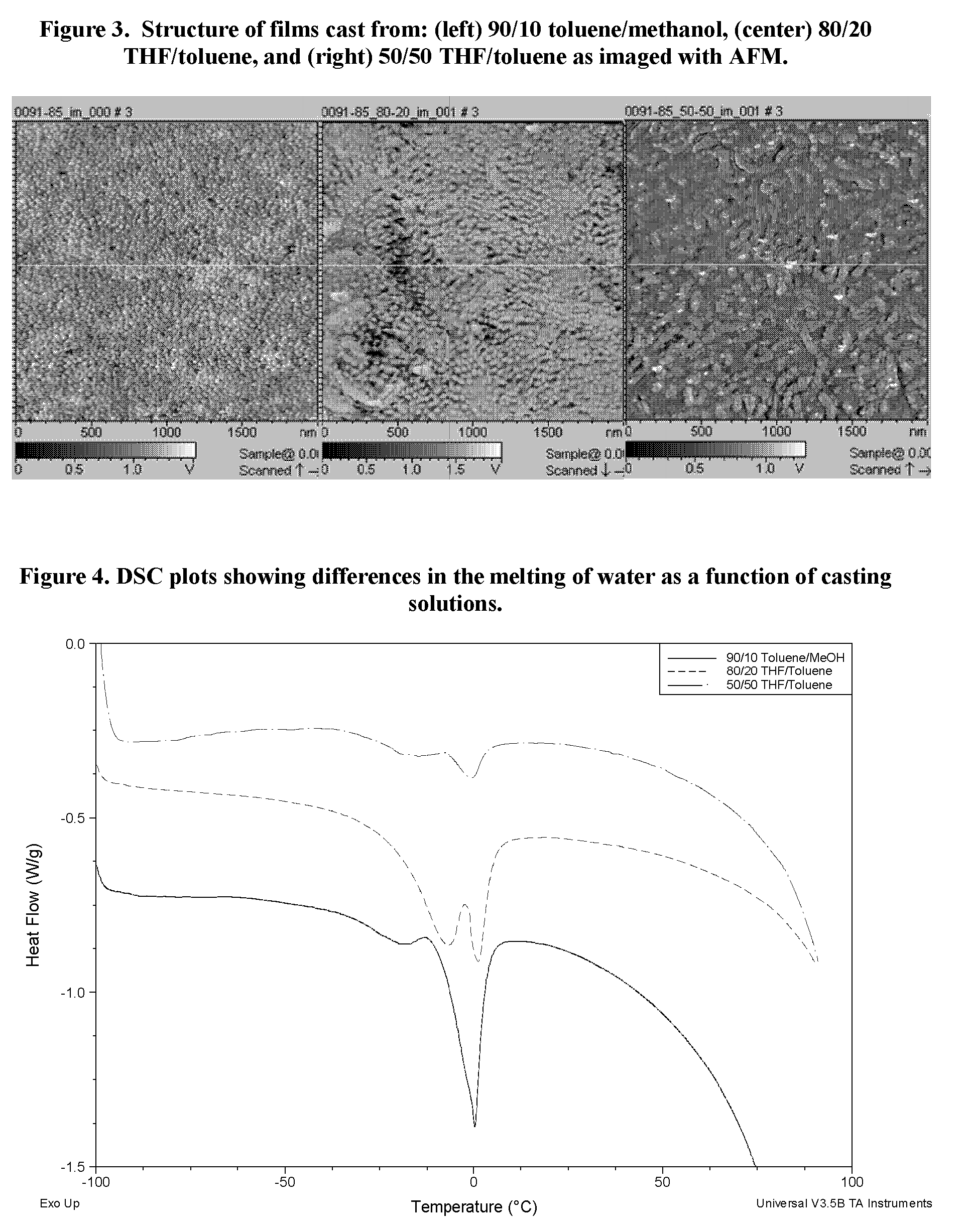Sulfonated block copolymers, method for making same, and various uses for such block copolymers
a technology of sulfonated block and copolymer, which is applied in the field the methods for making such block copolymer, can solve the problems of insufficient tensile strength of sulfonated block copolymer, inability to bind to water, etc., to achieve sufficient wet strength, reduce the reactivity of the ring, and high water transport properties
- Summary
- Abstract
- Description
- Claims
- Application Information
AI Technical Summary
Benefits of technology
Problems solved by technology
Method used
Image
Examples
Embodiment Construction
[0114]The base polymers needed to prepare the sulfonic acid containing block copolymers of the present invention may be made by a number of different processes, including anionic polymerization, moderated anionic polymerization, cationic polymerization, Ziegler-Natta polymerization, and living or stable free radical polymerization. Anionic polymerization is described below in the detailed description, and in the patents referenced. Moderated anionic polymerization processes for making styrenic block copolymers have been disclosed, for example, in U.S. Pat. Nos. 6,391,981, 6,455,651 and 6,492,469, each incorporated herein by reference. Cationic polymerization processes for preparing block copolymers are disclosed, for example, in U.S. Pat. Nos. 6,515,083 and 4,946,899, each incorporated herein by reference. Living Ziegler-Natta polymerization processes that can be used to make block copolymers were recently reviewed by G. W. Coates, P. D. Hustad, and S. Reinartz in Angew. Chem. Int. ...
PUM
| Property | Measurement | Unit |
|---|---|---|
| tensile strength | aaaaa | aaaaa |
| wet tensile strength | aaaaa | aaaaa |
| wet tensile strength | aaaaa | aaaaa |
Abstract
Description
Claims
Application Information
 Login to View More
Login to View More - R&D
- Intellectual Property
- Life Sciences
- Materials
- Tech Scout
- Unparalleled Data Quality
- Higher Quality Content
- 60% Fewer Hallucinations
Browse by: Latest US Patents, China's latest patents, Technical Efficacy Thesaurus, Application Domain, Technology Topic, Popular Technical Reports.
© 2025 PatSnap. All rights reserved.Legal|Privacy policy|Modern Slavery Act Transparency Statement|Sitemap|About US| Contact US: help@patsnap.com



